
1959 Rolleiflex 2.8E – Shooting family, friends, fashion and famous!
By Andy Jackson
Hi Steve,
Thanks for all your great dedication to your site bringing us all sorts of articles, new gear, digital or film and your never-ending enthusiasm! So, about four years ago you published a Daily Inspiration from myself, shots from my Leica CL. The images were mainly of my son, who was about 2 years old at the time. After reading your write up on the Rolleiflex Hy6 (which to be honest, I didn’t even know existed!) I thought I could do a User Report on my 1959 Rolleiflex 2.8E.
My friend Ludi – this was shot on Rollei Retro 400.
I’d shot film/transparency for a long time as a photographer working on a snowboard magazine and acquiring the Leica kind of reignited the idea of shooting analogue again. This time I was more interested in shooting black and white and was partly inspired by another article on your site by Max Marinucci about home processing. My late Uncle also had an influence on me from an early age, with his camera in hand, his slides and his black and white prints of me as a kid. I’d done darkroom work at my first job many moons ago at a design company in London, so I knew how it went, but had never done it at home. Having bought the necessary bit and pieces and some chemicals (totaling €80!) I started to develop the negatives from the Leica. Yup, the same grin factor as getting my transparencies back after a snowboard shoot but with the extra satisfaction of doing it myself! Now, I’m not even going to go into the practicalities or convenience factors of digital over film, as to be honest, as you said in your article “Analog is a different beast than digital in almost every way.” If I’m processing film or going through a digital shoot on the computer I like to get ‘in the zone’ – cup of tea and some decent tunes on the stereo and off I go!
Branko from Croatia, I used the Rolleinar close-up lens for this.
–
My good friend Doris, a yoga teacher. We’d been for a hike on the mountain and I had the 2.8E in my bag along with a Hassy 500cm, this is from the Rolleiflex.
So on to the Rolleiflex! After searching around on Fleabay and websites and doing some homework I realized I was going to have to spend a decent amount of money for a good one. At the same time I bumped into a friend here in Innsbruck who’d seen some of my film shots online. He told me his mum used to be a professional photographer and that she had a few old cameras left from her working days. I asked if any had two lenses on the front, he said he seemed to remember playing with something like that when he was a kid and he’d ask his mum. Two days later he calls me and tells me she still has her old Rolleiflex. He gives me the serial number and I track it down to a 1959 2.8E. Oh yes, the Carl Zeiss Planar. He’d been online and checked out the prices, not cheap really, a good one is at least €1000. He offers to sell it to me for €250 – I can hardly contain my excitement. So, off I go to meet his mother, she’s actually thrilled to be able to sell it to someone who’s actually going to use it, it’s been doing nothing for about 40 years. As you can see from the shot, it’s in pretty good shape. I sent it in for CLA to a company in Salzburg, it needed some work, lightmeter was replaced and some bits in the shutter – €400, so in the end I still have a sweet deal and the camera stays in the area.
Preparation and handling.
The Rolleiflex is not a heavy camera. It fits nicely into my Lowepro Event Messenger 150 bag, leaving enough room for the Leica or my FM2 or OM2, lightmeter and film in the front pocket. I’ve replaced the old leather strap with a modern one, this puppy is not gonna end up on the floor. Once you get used to it, it’s a quick camera to pull out and start to shoot with. Take a light reading, set aperture and shutter speed, flip the lid and focus. So, we have aperture from 2.8 – 22 with half stops marked. Shutter runs from 1 sec 1/500th plus B. Loading film isn’t too tricky, just remember to put the paper through the bottom rollers then close the back and start winding on with the lever. There’s a mechanism that ‘senses’ when the film goes through these rollers and then the exposure window starts to register, wind on and it will stop on the first frame. Ready to rock. I’ve also acquired a Rolleinar 1 close-up lens for it, these are rare as rocking horse pooh because of the Bayonet 3 mount and some people ask silly money for them – I paid £120 for mine, I’ve seen ‘em go for a lot more.
Looking through the viewfinder you realize everything is in reverse, this takes a bit of getting used to, especially trying to keep things level. We get twelve shots and twelve shots only, so patience and practice will pay off!
I shoot the odd landscape. Dolomites, Italy.
–
Francois, from, er, France. My friend was looking after his Indian motorcycle that broke down on a run here in England. He came back to pick it up. How could I not shoot this portrait.
Shooting family and friends and others.
I use this camera a lot for shooting images of my son. Sure, I could use my 7D and autofocus as he runs about (and I do) but over the last few years he has learnt that when daddy points the two eyed black box thing at him, he must stay still! It’s not about getting the right camera for the child but training the child for the camera 😉 Sometimes he’s not in the mood for stillness, so I leave it for a bit. Using a TLR at the right time though, I think is the secret. When he’s focused in on something or climbing a tree, I just ask him to stop and look up. Nine times out of ten he does. Candid racing about shots are best suited to newer technology, what I want from my Rolleiflex is the more thoughtful images, maybe even posed, if you can call it that. I prefer to look at it as shots where I have his attention, where we have our connection. Having the twelve shots makes me choosy about when I hit that shutter, I really have to be sure it’s what I want. I usually take one shot of a ‘scene’ and leave it at that then move on. Sometimes I don’t even move on, a roll can sit in the camera for days or a week or two. There’s no rush with this camera, no incessant need to snap everything in sight, it’s way more about gathering some great memories for me, of my little man growing up.
Rolleicord. My son Noah on a rainy afternoon.
–
If any one photo sums up why I love this camera, it’s this one. I took one shot of this scene, kept my fingers crossed that I’d nailed the focus and kept the camera steady, 1/30th of a second.
–
Zeiss Ikon Nettar. This camera is small when folded, very small for 6×6. Beautiful results.
Shooting friends is a little easier, they know how to sit still. The Rolleiflex instills a sense of wonder in everyone. I get the usual question – “Do they still make film for that” and the remarks about how beautiful it is. I’ve used it a lot at weddings, it’s a talking point for guests, certainly breaks the ice. Bride and Groom are always super stoked on receiving a set of hand printed images, the Rolleiflex shots are the highlight without a doubt. I’ve noticed people feel way less intimidated with the Rollei than they are with a DSLR.
Like the Leica, the Roleiflex has it’s own brand of magic dust it sprinkles on your images. The awesome depth of field, that ‘otherworldly days gone by’ vibe where your natural light shots look like from another era, which in a sense they are! 6×6 analogue is affordable for nearly all of us, whereas digging into our pocket-money for a digi Hasselblad or Leica S2 isn’t such a do-able proposition (well not for me at least!) I love the 2.8E, I love to photograph people with it, I love the results and I love the fact that I have a fixed lens (with option of close-up). It takes 25 minutes to develop a roll of film, then about half hour to hang up and dry. Scanning is painless on my Canon flatbed 9000f and results are ok – it’s no Nikon Coolscan but I get 50cm by 50cm scans out of it. My favourite shots I print in my darkbathroom 😉 but that’s another story.
Stephen Bartels, gallery owner of the same name, London.
–
Sir David Rodiagn, MBE (left) and his agent Ricky McKay (right). David is a living legend Reggae DJ, radio DJ (BBC), famous throughout the world. Ricky presented him with a 50cm x 50cm framed print of this shot for his 60th birthday. Proud moment indeed.
–
Terje Haakonsen, one of the world’s most famous snowboarders. This is part of a series I made of Snowboard Legends in 2013 and was published in a couple of magazines. This is one of my few flashed shots with the Rollei.
–
Tomi Toiminnen, ex pro snowbaorder, shwoing his tattoos ‘Never Forget’ one for an old friend of his who died too young, the other for a friend of ours who lost his life in an avalanche.
If any readers have ever thought about getting into analogue medium format photography but are put off by the hassle of processing their own films, don’t be! It’s way easier than you think and once you’ve successfully hang up your first roll to dry you’ll be hooked. As for colour. Well, that’s turning out to be a pricey business these days. Colour negative processing has just doubled in price here, about €8.99 per roll, so include the film cost and you’re looking at €18 at least for twelve shots (without scans). My friend has just started doing colour at home because of this and is really happy with the results, I will go the same route very soon.
I’d like to also mention two other cameras as a much cheaper alternative to a 2.8e or such like. I acquired a Rolleicord IV with a 75mm 3.5 Schneider Kreuznach Xenar for €120, see attached images for comparison. The other camera that really surprised me is the Zeiss Ikon Nettar 518/16 with a 75mm 3.5 Novar-Anastigmat – I picked this up from a local flea market for €35 in fully working order! This is a zone focus camera so I got my hand on a Voigtländer rangefinder that attaches to the cold shoe, this helps loads. The images form this camera are also sublime though a bit slower to use than the Rolleiflex, the output is worth it.
Lisa Marie, test shot for her model agency. Available light coming in through a window.
–
Ludi again.
–
Viktoria. Test shot for her agency when she was starting out two years ago. She’s all over the planet now.
So, in conclusion, I use my 2.8e for just about anything and everything as long as it’s not running. It’s light and very, very quiet. It can be discreet as you can just stand in the street looking down and press the shutter and no one really knows (I guess this is how Vivian Maier took a lot of her shots). There’s still plenty of specialists servicing and repairing them and has a strong enthusiast following and collectors worldwide. Shoot one roll of film on this and I’m sure you’ll be hooked. At the end of the day it’s just another tool for us to realize the images we want to create and like each of us has our own favourite bits of kit to do the job we all end up in that ‘special realtionship’ with one or two cameras. Happy shooting people
All the best,
Andy Jackson
Shoe repair dude, Goodge Street underground station, London. It was very dark.
–
Paul Clements, photo journalist, Beatles and Dylan fan, guitar and sitar player at Stephen Bartels Gallery, London (with our 3 Leicas huddled together)
–
Feeding the duck and goose on a rainy afternoon in the Lake District, Cumbria, England on a visit to my mum this year.
–
Reflection in a pond.
–
Ice cream on a Sunday.
–
Rolleicord. Kayla, my Siberian Husky and test model, never to be trusted off the line in a forest, or anywhere for that matter. Highly successful hunter.
–
Ingemar Backman, Swedish snowboard legend shot at the Air & Style contest here in Innsbruck. Google him for insanely high backside air shots!
–
A friend of mine asked me to shoot a wedding shower for her friend. Grandma showed up and watched the proceedings from this chair. One of my favorite shots ever despite the light leak.
–
This is Glenn, I used to work with him on the snowboard magazine. He works in Thredbo Ski Resort in the Aussie winter then travels around Europe to visit his adoring friends. The man is a legend.
–
Rolleicord. Forest scene. A much cheaper alternative but not the build or lens quality of the 2.8. Still not bad at all!
–
. Gabrille du Ploy shot in her gallery, Zebra One, that specializes in music photography amongst other things. That’s part of the complete set of original images shot for Beatles Abbey Road sleeve on the wall. And you thought a Leica was expensive…
–
Sort of street photography shot in Charlie’s mens hairdresser in Camden, London.
–
Alex, a yoga teacher friend of mine, we did some shots in the forest near me. A reflector was used to light the face.

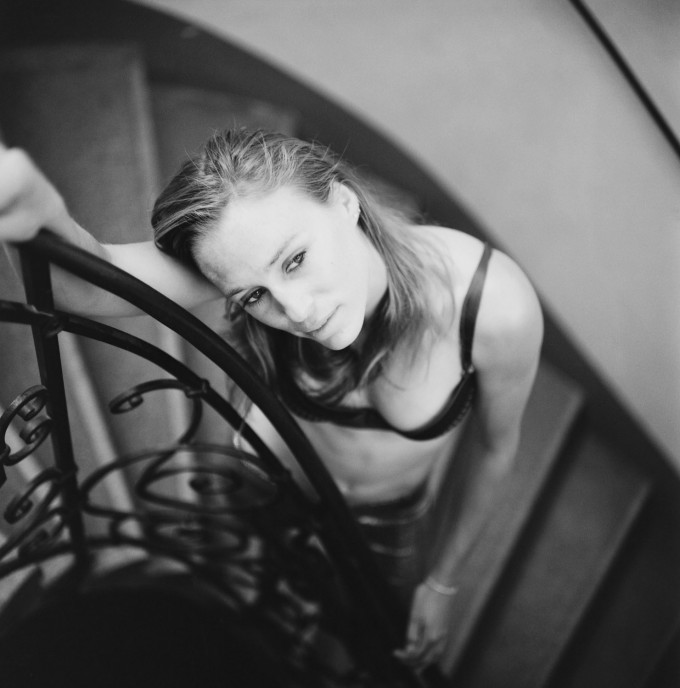



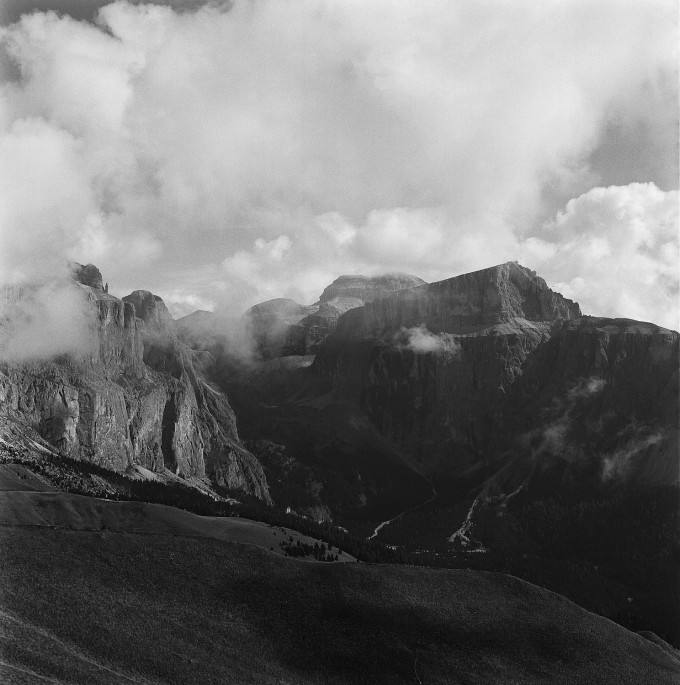

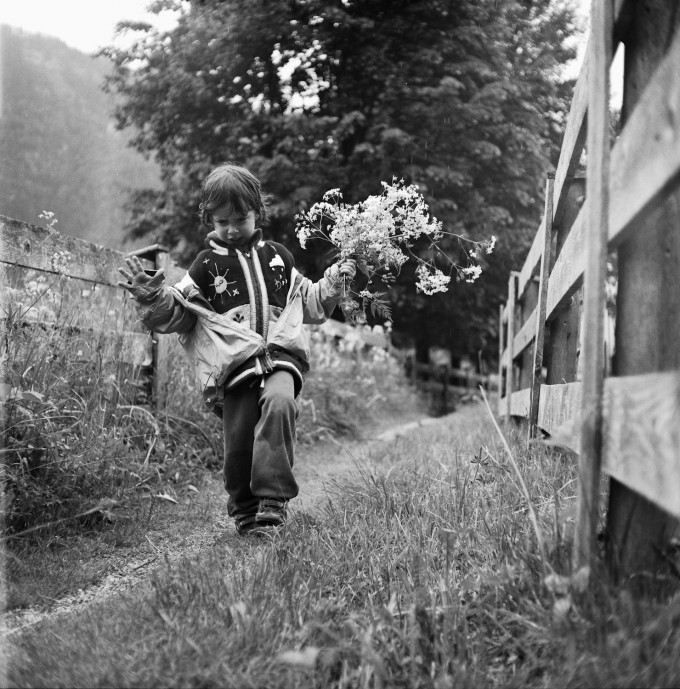
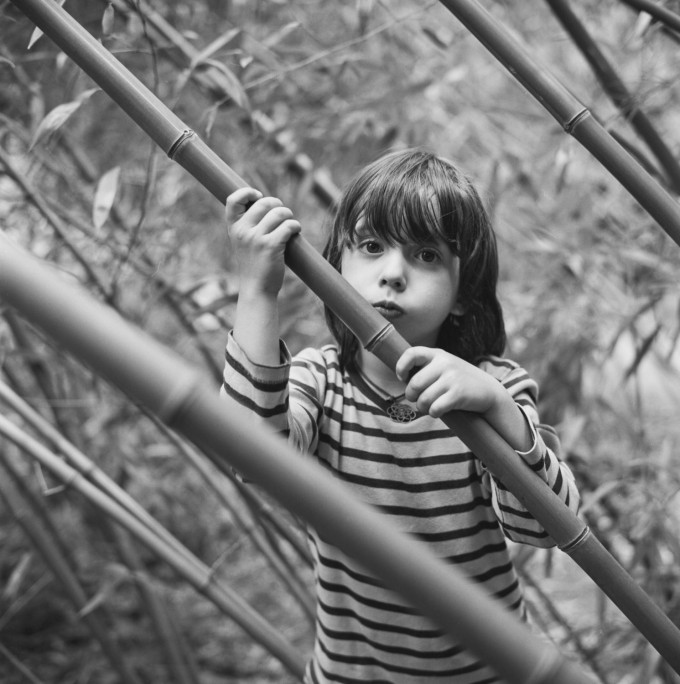

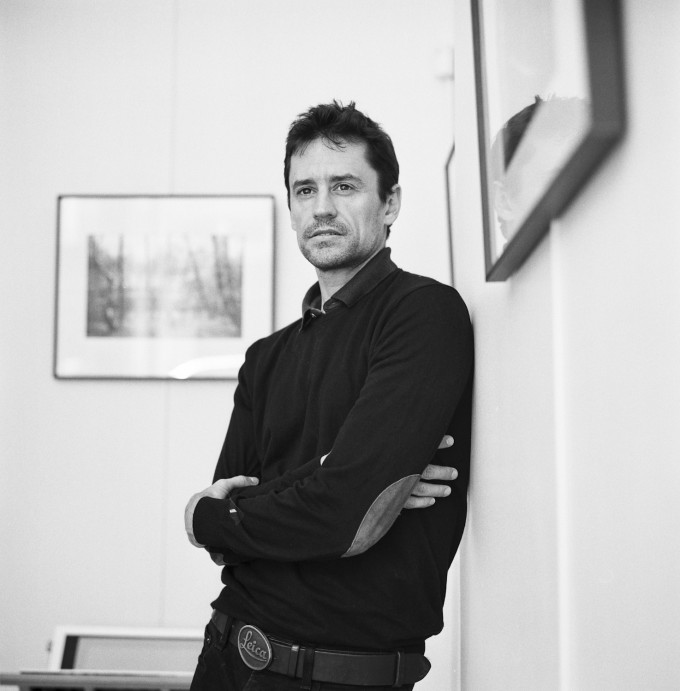

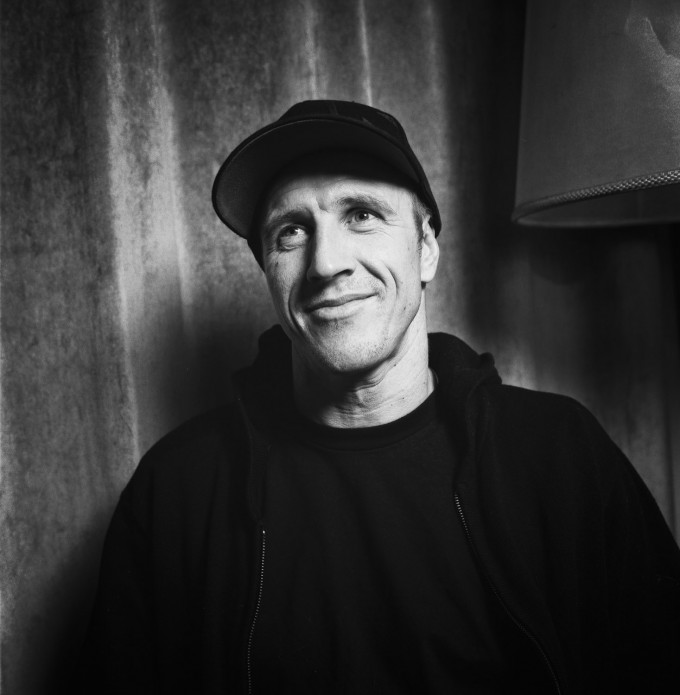

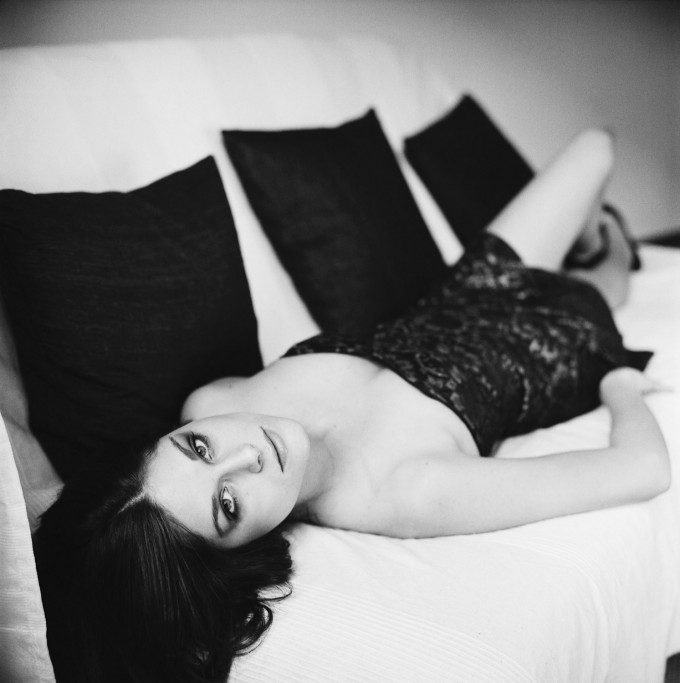

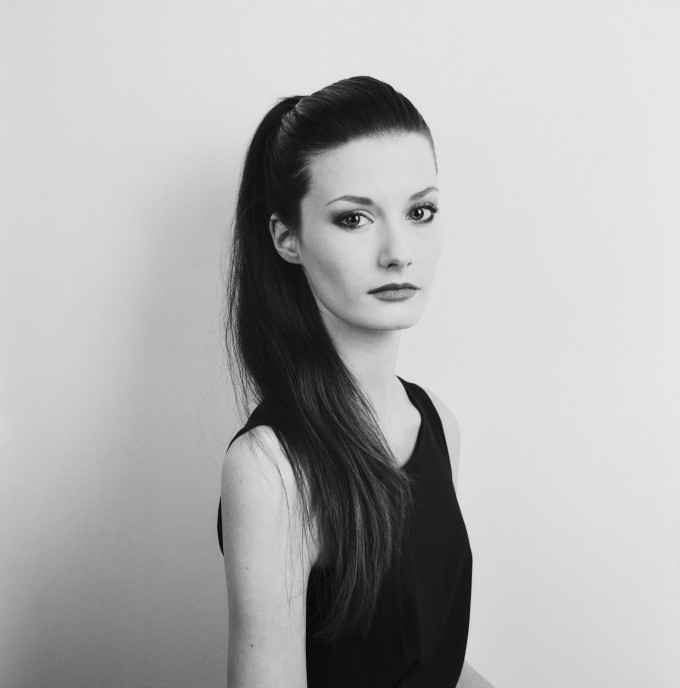




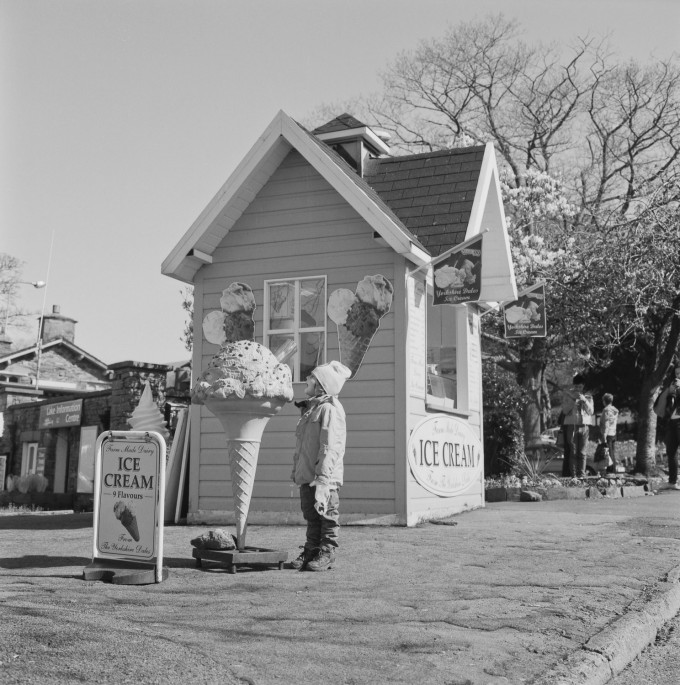



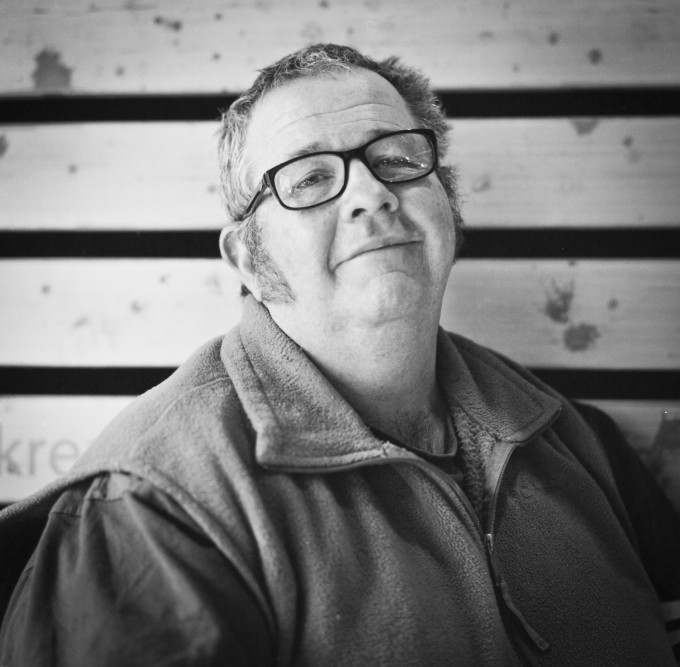
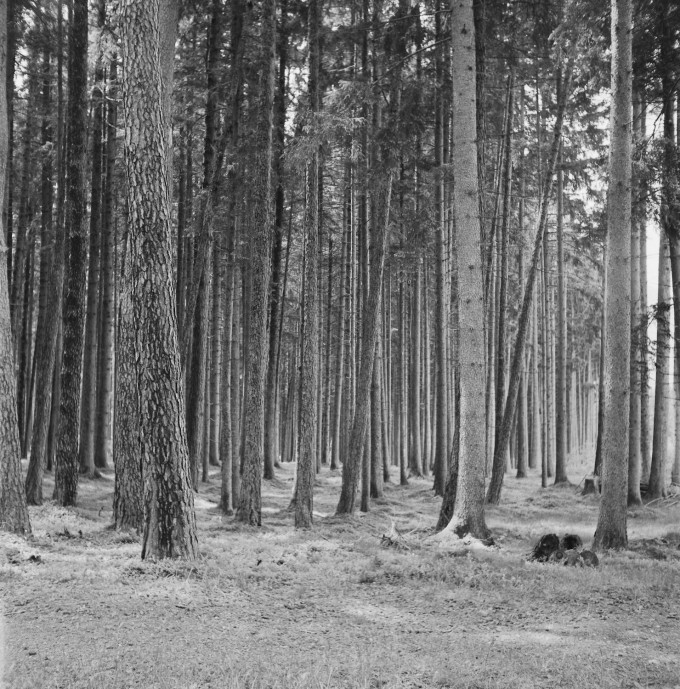

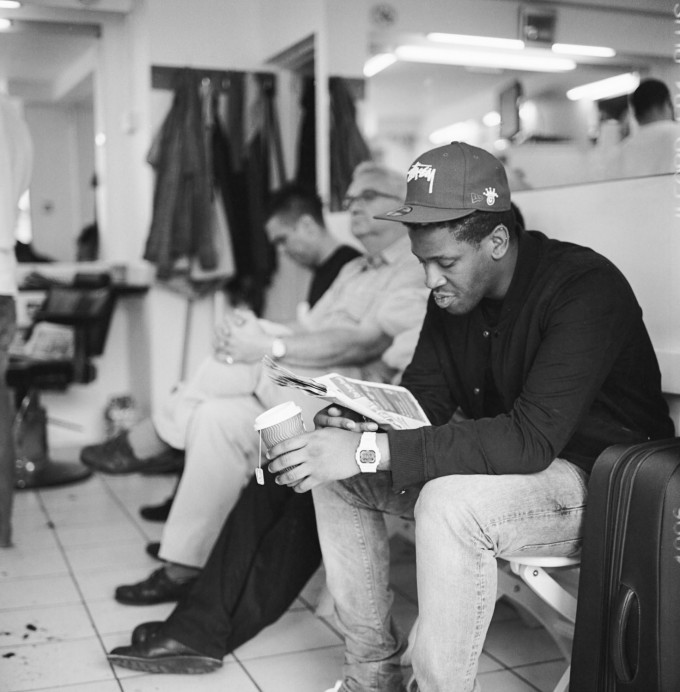
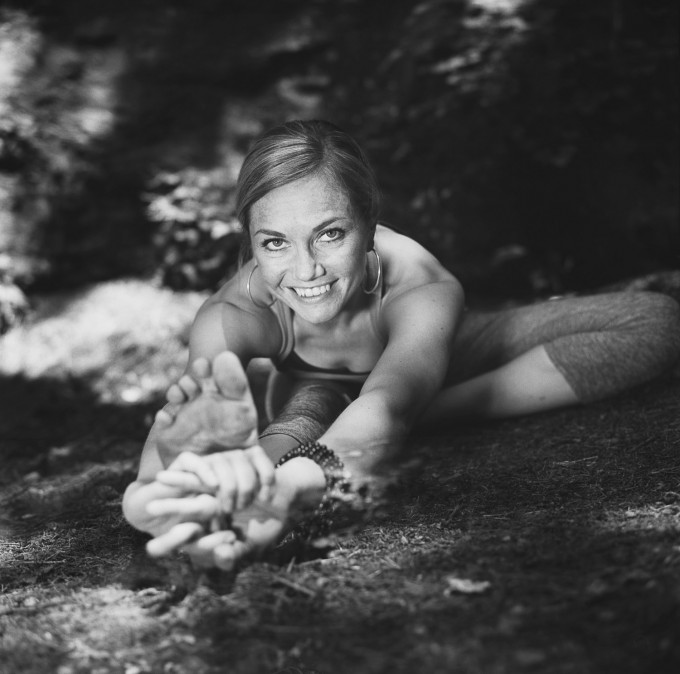

I shot my first photo in 1941 and have never looked back. The Zeiss glass has always worked for me, but it isn’t “fairy dust” but the proprietary glass formula originally supplied by Schott, which was later a division of Carl Zeiss. Today, increased awareness of health problems among optical workers at Zeiss led to the official government ban on lenses containing lead. So, hang onto those old optics from Carl Zeiss, Germany, as they provide a look not equaled by the rest of the industry.
Keep connecting with your subjects in the quiet, non-confrontational manner of the TLR user and you’ll continue your excellent artistry. Thanks!
Outstanding presentation, awesome photos.
Really enjoyed the Rolleiflex Love here! Great write up and excellent photos!
I have 5 rolls of Rollei Pan 25 awaiting development – using a Rolleinar 1 and 2 on my 3.5F so will be uploading and an article soon!
For those liking classic TLR’s, I recommend the excellent MPP Microcord TLR which I reviewed right here!:
http://www.stevehuffphoto.com/2012/11/02/the-mpp-microcord-tlr-by-ibraar-hussain/
Thanks Ibraar! Great images you get from that Microcord, never heard of it before. All landmarks I know and love from home, makes me miss London!
so, i’m cruising through your article, enjoying the photographs…i can almost smell the kodafix. then…BAM!!! there’s terje! rad! just, rad. i spent my teens and early twenties in the 90’s, snowboarding every chance we could during the winter. we would always, ALWAYS watch terje’s videos the night before to get amped up. to this day we still talk about him from time to time. can’t believe you had a moment to photograph him. sick. you just made my day. thanks dude.
in all fairness, i like the other photos as well…
Haha yeah Terje, legend. First met him on a Burton photo shoot in 95 and many times in-between and when he turnedd up for the Legends session at the Air & Style contest here in Innsbruck we did the shots. There’s a whole series actually with Rippey, Jamie Lynn, Iguchi, Gigi Rüf, Reto Lamm amongst others…
Jim Rippey?! Oh man, Legit. That guy used to send it large and fast. Best thing about Rippey is everything he did was huge, hectic, fast, and – somehow – clean. Pretty sure one of my buddies still has a Jim Rippey pro model sitting in his garage somewhere. Serious trip down memory lane dude…
🙂 He’s a pastor now somewhere in the States!
Way nice review, i do love it, when ppl especially reviewing older gear & lenses, of course.
Nice pictures, i found myself the images from trees, viktoria & lisa marie best, sorry, i do dislike blondes.
cheers
marc
Thanks so much for keeping these venerable TLRs alive and relevant as they should be. Worth mentioning the worthy Yashicamat 124/124G if you want comparable (probably not better, but comprable) images for a lot less $$$. Not as fast (F3.5), and maybe more swirly bokeh, but pretty darn good. Very vivid and life-like at the center in a way that these picture remind me of. Medium format rules!
I’ll grab a Yashicamat one day if one turns up for a good price 🙂
Hey Andy, sweet pics! I have multiple old cameras I still love to shoot with, for the same reasons as yourself. Love it!
I apologize for coming out of left-field here but Tomi is an old friend from our days as snowboarders, I was the team manager for Duotone Snowboards for a brief spell—as well as developing the branding/identity for them. I’d love to reconnect with him if possible. Not sure if I’m allowed to post my email here for a private message but alex@bigscarypuppies is my contact email.
Alex Bacon is the name, no worries if it doesn’t happen.
Hi Alex! Haha small world mate, My friend Stuart was working on Duotone for a while too. I’ll pass your mail on to Tomi, he’s living in Biarittz area working for Quiksilver. I’ll send you a link to his FB page too 😉
Where are the fashion shots?
I’d though I’d included more in there but anyway, I liked the four F’s 😉
Have a mid 1950s Rollei 2.8 mine shoots up to 1/400. Used it as my primary camera until about 1990 when I inherited a contax III w/ 50 mm 1.5. Both take fantastic photos. Had many comments at the photo lab about what equipment was used to take the shots. Want to impress your friends? Project 6×6 slides of your vacation on the screen.
Consistent high quality in these photographs. The Rollei gets a lot of credit, but i think the photographer deserves his share! I wonder if you always stick with the square format or sometimes crop to other aspect ratios?
Hi Donald, I do sometimes crop when I’m making a darkroom print. The idea with 6×6 was to crop into the frame as I mentioned in a reply somewhere else. I guess like many others I like the 1:1 aspect ratio and I suppose I stick with it a lot as I’m generally shooting for myself and don’t really have to take into consideration a magazine page format. 🙂
Beautiful photos from a beautiful camera -if a digital version were ever resurrected it would probably get the same haters on forums as does Leica -pity as there should be room for all types !
Costs would be higher if it were produced in Europe of course -but does everything have to be made in Asia ?
I do not deny the Asian work ethic or genius especially at technological manufacturing but I think even they would welcome a small amount of something different and from what I have been reading these Rollei Leica and Hasselblad cameras have a cult following in places like Tokyo -good news !
I once had a Leica M6 which I sold to get my M8. Pity as I would have liked to hold onto the M6 as I loved the B and W images it produced. If I were the owner of a Rolleiflex I would never sell it unless I was in dire straits.
Keep shooting and posting.
Rgds
I have a few Rollei’s, assorted models and vintages, 1936 through to 2014. I am a keen Rollei fan and the following may be helpful. As of this week, you can still buy a new Rollieflex TLR ( well its no weirder than buying a new Leica M-A) and the the truly great Hy6, from the manufacturer, DHW http://www.dhw-fototechnik.de/ . DHW will also service old Rollei TLRs, and some times can fix the light meter though that’s hard given the age of the parts. The USA has number of specialist Rollie repairers. Fitting a new Maxwell screen makes them in the view of my aging eyes easier to focus. None of the major accessories are that hard to find or are expensive. Worth going to Eric Hiss’s site http://rolleiflex.us/. In the UK you will find Paul most helpful at http://rolleiflex.co.uk/. Any way great shots, and great to see a Rollei being used out there.
Thanks for the tips 🙂
Lovely pictures 1,2,10 and last one is my faves 🙂
The best advert I’ve seen for a Rollei for a long time. Lovely.
I’ve got a 2.8f and I love it to bits. It was a bit dry and stiff when I bought it January but had it fully serviced in June and now it’s just fine. Normally use it with TriX and dev in TMAX RS, quick and gives very nice results. Also put a new Chinese bright screen which is excellent and a new leather strap. Keep it in a Billingham Hadleigh Small which feels very natural with plenty of space for film, cable rlse etc. The meter is just fine. Shade it a little with your hand and all is good.
For those who are uncertain, Avedon and Bailey used them back in the day, the image quality speaks for itself.
Kind regards
John
(used to live in Camden Town)
A bright screen is a good plan, I may invest 😉 The screen in the Rolleicord is much dimmer, that would be a much easier camera to use if that was brighter too!
Love these beautiful images, and the tender smiles people wore in them. Thank you so much for sharing!
Hey Andy, how’s the viewfinder coverage like? Is it 100%? Or is any 6 x 6 for that matter? Cheers, Kelvin
All I can say is that it’s pretty accurate, the Rolleiflex has parallax correction when you focus up close, the frame moves slightly. I guess it’s not 100% but the idea with 6×6 was to be able to crop into the image (like for an A4 magazine page) whilst keeping quality.
What pops up in my mind, is the mysterious but magnificent Vivian Maier. She also used a Rolleiflex, not sure it was the same model. For the rest, we hardly know anything about her, but her legacy collection shows the most perfect random portrait shots I’ve ever seen. I feel the same kind of ‘honoring your subject’ in your pictures, that gorgeous shallow depth that is hard to get in the digital age and certainly not with the smaller sensors. Another thought was that my Nikkor DCs have also a bit that kind of texture, though they have a completely different focal length. They are capable to manage the sharp / unsharp layer in a picture in a way that doesn’t exist in modern lens concepts. Because the times have changed. Every lens now is computer calculated & designed, perfect from center to corner and whatever artifact is considered as being unacceptable. Also don’t mention the word vignetting it’s the highest sin in lens quality if there is some minor light fall off in the corners. But many images I see now are extremely clinical. Notice the difference between Nikkor (sorry, I’m a Nikon man) AF-D and AF-S. How in 20 years the lens design changed. Or observe the IQ of all those newer MLICs, I’m using Fuji too in my workflow. Well, it’s all extremely perfect, we never had this kind of consistent sharpness in standard products but on the other hand, the images don’t radiate the same kind of charm as your Rolleiflex does in EVERY shot. Sure it’s medium format but I’m sure that’s not the only reason. Last bit not least, there is so much a do about FF DLSRs and MLIC, but I’ve always found it a pity that a similar concept – say just a square box with a horizontal top display – doesn’t exist in the digital age.
Some really nice work. I enjoyed quite a few of the photographs presented. Interesting moments and compositions, very nice toning, no over-processed photographs. Thank you for sharing.
Thanks Matus! I only spot out dust and scratches and bring up contrast on the scan (I scan for a very flat file then work with curves in Photoshop or Lightroom) add a bit of sharpening etc 😉
Great post, good pictures Film is back and i’m very happy with this !!
Greg
Some are nice photos with just OK exposures. I have a Yashica Mat-124G twin lens reflex that I bought more than 40 years ago. It’s like new, I hardly ever used it. I prefer the photos I can get with my Hasselblad medium format camera. I prefer a smaller, lighter camera like a Leica M6 or M7 for black and white film shots.
Fabulous work and a great cast of characters to work with. Camera’s nice, too!
Have hung on to my Hasselblad 500 rig but it’s remained untouched for years. There’s a little Zeiss fairy dust with those, as well. One of these days….
As they say in the movies, “You had me with Ludi!” In the first image, and then sealed the deal with the second one. Of course, I’m talking about the quality of the b&w rolleiflex photographs. All your models and subjects are just as good and share a common “style” or type of b&w image that digital cameras only hope to get with post-manipulation in PS. Personally, I like that look and I’m glad you shared them with us. You have brought all the nostalgic b&w film shooters out of the woodwork. You caught me with one recently purchased roll of Fijifilm Acros100 film I ordered on a whim to make me try my “paper weight” Pentax Spotmatic film camera one more time. And yes, I also sold a film Leica, a M6 after getting tired of the cost of lab development, time spent scanning, and reduced quality of the digital print. What really stopped me was the realization that I was using a digital camera in my scanner–and now Epson flatbed scanner–to second-hand digital photographs of a negative. How silly is that? Nevertheless, as you’ve shown, something is still missing from the pure digital simulations. I tried scanning existing (old) prints and gave up, then switched to using a recent, high quality digital camera and lens to simply take a digital photograph of the print. It’s assumed that only the old film print process can show the full quality of the image on the film negative. So, again, what’s the point of going through the extra steps of scanning a negative or print?
If you have any actual darkroom prints of some of these beautiful “web” images you’ve shared, have you tried taking a high pixel digital photograph of the print to see it if does more justice to the negative than the scan? If you can lay them out flat enough, using a camera would be easier for me than my lower quality Epson flat scanner, which is just “okay.” Finally, it was not just Ludi. I agree with you that the “kept my fingers crossed” image of your son was spectacular. It really shows off the tonal qualities of the b&w image, not to mention how handsome your son is. Thanks again for sharing.
Great images and riveting narrative Andy; good to see you here! You’re a gifted man. And there’s something about b&w film images…
Cheers,
Michiel
Thanks Michiel, hope you’re well 🙂
I am Andy, thanks! Twins keeping me/us busy… 😉
Beautiful pieces, man; like time traveling. Proof that, in the right hands, film still trumps digital in the IQ department.
Great set of photos, plus a really informative article on a wonderful camera. I use a Rollei Automat, slightly smaller than yours. A Tessar f3.5 lens. Strange how one can “move on” or not, as far as film being exposed. My success rate way ahead of any other camera, film or digital.Sure a roll can take months..
I simply enjoy my Rollei.
A few of my friends have the 3.5 Tessars also, not much in it between them and the 2.8. Shooting wide open on the 2.8 can be challenging in darker situations as I don’t have a super bright screen. As you say Jason, it’s a camera to be enjoyed, spot on!
Absolutely wonderful images! Inspiring!
Thanks for all the positive feedback people, appreciate it 🙂 Check Max’s piece on home developing that Steve linked to in the article…
Great feature–thanks for posting!
M.
Ok. So no one comments about the Leica belt buckle?
Seriously though, great article!
Interesting set of friends.
Wonderful shots.
really neat! really enjoyed your pics.. 🙂
Great shots! My 2.8E is also my favorite camera.
Best regards
Huss
As with Steve’s Hy 6 shots, viewed on computer monitor, these seem to capture the best of both film and digital in one… very, very good and I’m going to look into getting one and shooting some film!
Do it Steve, enjoy the process. I shoot on average a roll a month so it’s not a big deal to develop and scan, my favorite way to spend quiet time with my photography.
Holy cow, Terje Håkonsen… that man is a hero of mine!
Great photos all. My dad had a TLR when I grew up but I have no idea what make and model. But I always loved those photos, there was just something about them.
Thanks for sharing.
Wow thank you for sharing. Great shots. Like the pic from Stephen with the Leica belt. Great.
I purchased a 2.8 E Planar in 1960 and loved it. I was getting sharper and better contrast images than with the 4 X 5 Super Graphic (135mm Wollensak Raptar as I remember) that my employer insisted I use. He was very happy with what I delivered from the Rollei, little did he know. Many years have gone by, and I sold the Rollei to raise money for digital Leica equipment – a bittersweet moment. My dearest wish: could Rollei come up with a digital 2.8 Planar TLR? I would buy one in an instant.
A digital back for this? That thought has crossed my mind more than once 😉
Great mix of photos. do give colour development a go, its not really any harder than B & W apart from greater temperature control although you do need to develop a fair amount of film to make it cost effective
That’s next on the list of ‘to do’s’ – about €20 for a kit that will process about 20 rolls. Can’t wait!
Beautiful work, Andy. I’ve been playing around with a Tessar 3.5 and having a lot of fun. So far, I’m liking Delta 100 and Portra 160 — I’m wondering what film stock you’re using? Whatever it is, it’s gorgeous.
I shoot with Tri-X and Ilford HP5 and FP4 mainly. I’ve used the Rollei Retro and Holga films too, but they tend to ‘curl’ a little but you do get that old school vibe with them too.
Hey Andy,
What a perfect way to start my day!! Beautiful and inspirational film images crafted by a great photographer using an all time classic piece of kit. It doesn’t get better than that in my book.
Thanks for sharing these.
Thanks Jason, seriously love your work too mate. How’s that Flextight coming along?!!
Excellent photos and great write up. There are only two cameras I regret selling 1. my Leica M9-P and 2. My beautiful Rolleiflex 2.8f. I still have my Hasselblad 503CXI and never plan to sell that but I sure wish I still had the 2.8f. I agree with you on the people relaxing and being curious about the camera. I managed a lot of great people pics with that thing. Anywho great work, keep it up 🙂 Cheers
Cheers Micheal, the 2.8E’s not going anywhere 😉
A wonderful article. I have a 2.8E also and I absolutely love how it renders an image with a 1950’s classic look, the pictures it takes just sing to me. It can flare a little depending on the scene, but it just has something special to my eye and I will never get rid of it. The only drawback is that its not such an easy task to switch out a focus screen or add a different viewing hood. I ended up also buying a 2.8FX. The convenience of a different hood, focus screen and light meter does come in handy. But those modern coatings seem to make the image a little to sterile for me compared to my 2.8E. I actually think the 2.8E spoiled me. I would say he same thing about a Fuji GF670 I have. I would ditch the FX over the 2.8E any day. DO you find the light meter accurate and you actually were able to get it replaced?
Hi Paradigm, glad you like the article! I don’t use the light meter on the camera, it’s not that accurate, even though it was repaired when it was serviced. I use a hand held Sekonic, works fine 🙂
Sorry, auto correct seems to spell your name wrong 😉
nothing to say ! excellent
Thanks for sharing. Wonderful images from a lovely camera. Medium format 6x6cm is what I miss most from my film days. I know, I know… I should get back into it!
Even if I shoot just one roll a month, it’s worth it 😉
Absolutely beautiful photos. All of them! I don’t know how I’ll put this into perspective but film photos are so much more three dimensional than anything I see from digital imaging these days.
Great pictures Andy! I can totally relate with your story, as I shoot with a Yashica Mat 124G. These camera’s produce stunning results and offer a wonderful user experience as well.
I’ve never used the Yashica but I know it’s a great alternative to the Rolleiflex for getting into TLR’s without committing to too much cash. I think they use the bayonet 1 mount so filters and close-up lenses are more available.
Absolutely beautiful! Both pictures and camera 🙂
I do have a Seagull 4A-109 TLR|75mm f3.5, always impressed with the result. I hope that one day I find time to learn develop the film at home.
Thanks Paul 🙂 Youtube has some good tutorials on home processing!
BTW, you have to print them out and appreciate film! The result more stunning 🙂
Great stuff! My Dad had one of these which explains why we have some pretty good family photos.
It is a bit disorientation looking down at an upside down image though when taking a picture. It is almost an analogue version of a modern LCD screen.
The image is not upside-down. It is, however, reversed from left to right. That’s not so bad for stationary subjects, but tracking motion is tricky.
I used to have the 3.5F version. The view looking down is actually good for composition with some subjects – landscapes particularly so. But it’s terrible for moving subjects – try panning with the reversed left to right view!!